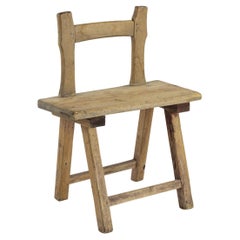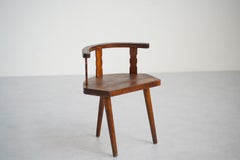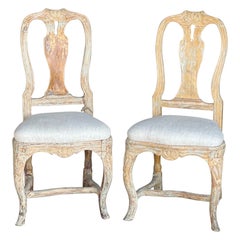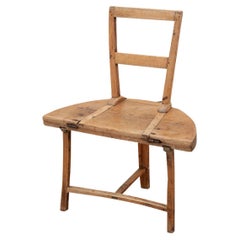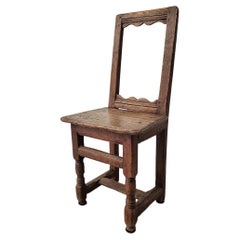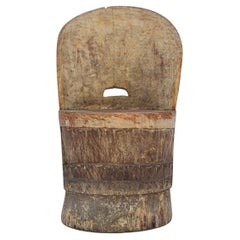18th Century Swedish Chairs
Antique Early 19th Century Swedish Side Chairs
Pine
Antique 18th Century Swedish Rustic Chairs
Wood
Antique 18th Century Swedish Gustavian Chairs
Burlap, Wood
Antique 18th Century Swedish Chairs
Wood
Antique 18th Century Swedish Rococo Chairs
Wood, Paint
Antique 18th Century Swedish Rococo Chairs
Pine
Antique 18th Century Swedish Other Chairs
Iron
Antique 18th Century Swedish Dutch Colonial Chairs
Oak
Antique 18th Century Swedish Chairs
Wood
Antique 18th Century Swedish Rococo Chairs
Linen, Wood, Paint
Antique 1760s Swedish Rococo Chairs
Birch
Antique Mid-18th Century Swedish Baroque Chairs
Pine
Antique Late 18th Century Chairs
Pine
Antique Early 18th Century Swedish Chairs
Upholstery, Wood
Antique 18th Century Swedish Chairs
Upholstery, Wood
Antique Late 18th Century Swedish Gustavian Chairs
Pine
Antique 18th Century Swedish Rococo Side Chairs
Upholstery, Walnut
Antique Late 18th Century Swedish Rococo Chairs
Pine
Antique 18th Century Swedish Gustavian Chairs
Pine
Antique 18th Century Swedish Rococo Chairs
Pine
Antique Late 18th Century Swedish Folk Art Side Chairs
Pine
Antique Early 18th Century Swedish Baroque Chairs
Pine
Antique Mid-18th Century Swedish Gustavian Side Chairs
Linen, Wood
Antique Late 18th Century Swedish Rococo Side Chairs
Pine, Paint
Antique Late 18th Century Swedish Gustavian Chairs
Oak
Antique Late 18th Century Swedish Gustavian Chairs
Linen, Wood, Paint
Antique Mid-18th Century Swedish Rococo Chairs
Pine
Antique Mid-18th Century Swedish Gustavian Side Chairs
Pine, Paint
Antique 18th Century Swedish Rococo Side Chairs
Upholstery, Wood
Antique 18th Century Swedish Gustavian Chairs
Fruitwood
Antique 18th Century Swedish Gustavian Chairs
Giltwood
Antique Late 18th Century Swedish Rococo Side Chairs
Leather
Antique 18th Century Swedish Baroque Chairs
Leather
Antique 18th Century Swedish Gustavian Chairs
Wood
Antique Early 18th Century Swedish Scandinavian Modern Chairs
Birch, Pine
Antique 18th Century Gustavian Side Chairs
Pine
Antique Late 18th Century Swedish Baroque Chairs
Pine
Antique 19th Century Swedish Gustavian Chairs
Pine
Antique Mid-18th Century Swedish Rococo Dining Room Chairs
Wood
Antique 18th Century Swedish Rococo Corner Chairs
Wood
Antique 18th Century Swedish Gustavian Chairs
Wood
Antique 18th Century Swedish Rococo Bergere Chairs
Upholstery, Wood
Antique 1760s Swedish Rococo Chairs
Birch, Giltwood
Antique Late 18th Century Swedish Gustavian Dining Room Chairs
Fabric, Wood
Antique Late 18th Century Swedish Gustavian Chairs
Pine
Antique Late 18th Century Swedish Gustavian Chairs
Wood
Antique Late 18th Century Swedish Gustavian Chairs
Pine
Antique 18th Century Swedish Rococo Dining Room Chairs
Upholstery, Wood, Paint
Antique Late 18th Century Swedish Gustavian Chairs
Fabric, Wood, Paint
Antique 1770s Swedish Rococo Chairs
Birch, Pine
Antique 18th Century Louis XV Dining Room Chairs
Silk, Giltwood
Antique Late 18th Century Swedish Gustavian Chairs
Linen, Wood, Paint
Antique Late 18th Century Swedish Gustavian Dining Room Chairs
Mohair, Elm
Antique 18th Century Swedish Gustavian Side Chairs
Wood
Antique Late 18th Century Finnish Gustavian Side Chairs
Pine
Antique Late 18th Century Swedish Gustavian Lounge Chairs
Fabric, Wood
Antique Late 18th Century Swedish Gustavian Chairs
Birch
Antique 1760s Swedish Rococo Chairs
Birch
- 1
18th Century Swedish Chairs For Sale on 1stDibs
How Much are 18th Century Swedish Chairs?
Finding the Right Seating for You
With entire areas of our homes reserved for “sitting rooms,” the value of quality antique and vintage seating cannot be overstated.
Fortunately, the design of side chairs, armchairs and other lounge furniture — since what were, quite literally, the early perches of our ancestors — has evolved considerably.
Among the earliest standard seating furniture were stools. Egyptian stools, for example, designed for one person with no seat back, were x-shaped and typically folded to be tucked away. These rudimentary chairs informed the design of Greek and Roman stools, all of which were a long way from Sori Yanagi's Butterfly stool or Alvar Aalto's Stool 60. In the 18th century and earlier, seats with backs and armrests were largely reserved for high nobility.
The seating of today is more inclusive but the style and placement of chairs can still make a statement. Antique desk chairs and armchairs designed in the style of Louis XV, which eventually included painted furniture and were often made of rare woods, feature prominently curved legs as well as Chinese themes and varied ornaments. Much like the thrones of fairy tales and the regency, elegant lounges crafted in the Louis XV style convey wealth and prestige. In the kitchen, the dining chair placed at the head of the table is typically reserved for the head of the household or a revered guest.
Of course, with luxurious vintage or antique furnishings, every chair can seem like the best seat in the house. Whether your preference is stretching out on a plush sofa, such as the Serpentine, designed by Vladimir Kagan, or cozying up in a vintage wingback chair, there is likely to be a comfy classic or contemporary gem for you on 1stDibs.
With respect to the latest obsessions in design, cane seating has been cropping up everywhere, from sleek armchairs to lounge chairs, while bouclé fabric, a staple of modern furniture design, can be seen in mid-century modern, Scandinavian modern and Hollywood Regency furniture styles.
Admirers of the sophisticated craftsmanship and dark woods frequently associated with mid-century modern seating can find timeless furnishings in our expansive collection of lounge chairs, dining chairs and other items — whether they’re vintage editions or alluring official reproductions of iconic designs from the likes of Hans Wegner or from Charles and Ray Eames. Shop our inventory of Egg chairs, designed in 1958 by Arne Jacobsen, the Florence Knoll lounge chair and more.
No matter your style, the collection of unique chairs, sofas and other seating on 1stDibs is surely worthy of a standing ovation.
- 1stDibs ExpertApril 5, 2022Yes, wedding rings have a long history, stretching back to ancient Egypt. The first diamond engagement ring was created in 1477 by Archduke Maximillian of Austria. Browse a wide array of vintage and contemporary wedding rings on 1stDibs.
- 1stDibs ExpertApril 5, 2022In the 18th century, art changed in style from Baroque to Rococo and Neoclassicism. Art became more ornamented and idealized during the Rococo period and then shifted toward a style that emulated the artwork of ancient Greece and Rome near the end of the century. You’ll find a variety of fine art on 1stDibs.
- 1stDibs ExpertNovember 13, 2024To identify 18th-century furniture, you can research your piece in the context of the prevailing styles of the period or consult a certified appraiser or experienced antique dealer. To identify your item on your own, look over it for maker's marks, such as carvings, stamps, brands and labels. Researching the marking can help you determine the maker of your piece, and from there, you can search further to learn more about your particular item. Without a maker's mark, the best approach is to consider the characteristics of the dominant furniture styles during the 18th century. In England, these included William and Mary, Queen Anne, Georgian, Chippendale, Hepplewhite and Sheraton. Some French furniture styles of the 1700s include Louis XV, Louis XVI and Régence. Find a diverse assortment of 18th-century furniture on 1stDibs.
- 1stDibs ExpertApril 5, 2022One way to check if your brass candlesticks are from the 18th century is to look for the two seams running lengthwise on either side. This is from when the candlestick was molded in two halves and then soldered together. You’ll find a variety of candlesticks of all shapes and sizes from some of the top sellers on 1stDibs.
- 1stDibs ExpertJanuary 10, 2025The individuals considered the Big Three of 18th-century cartoons are William Hogarth, James Gillray and George Cruikshank. Although the 18th century saw a widespread increase in illustrations in newspapers, these three illustrators were particularly well-known for their work. Hogarth's work was extremely diverse, ranging from serious, realistic paintings and portraits to satirical and moralistic illustrations filled with symbolism. A British caricaturist, Gillray is remembered today for his artworks representing political and social satires, like his political cartoons against George III of England. Despite being a prolific caricaturist, Cruikshank is now most famous for illustrating the works of Charles Dickens. On 1stDibs, find a wide variety of illustrations.
- 1stDibs ExpertApril 5, 2022At the end of the 17th century, Europe went into a frenzy over porcelain. Asian porcelain was highly sought after, and spurred the foundation of the Meissen factory in France, where hard porcelain went on to be made. You’ll find a large collection of porcelain pieces from many of the world’s top sellers on 1stDibs.
Read More
All the Furniture in This Organic Modern Soho Loft Can Be Yours
Andrianna Shamaris has filled her epic new home with pieces of her own design.
20 Inviting Dining Rooms Perfectly Arranged for Entertaining
Top interior designers show — and tell — us how to create delectable spaces for hosting dinner parties.
Nobody Puts This Sunny Sofa in a Corner
With its plush cushions, cane details and dazzlingly colorful back, it’s inviting from every angle.
The 21 Most Popular Mid-Century Modern Chairs
You know the designs, now get the stories about how they came to be.
Fred Rigby’s Modular Seating Can Be Configured in So Many Handy Ways
The plush Cove Slipper 2.5 Seater sofa is just one of many convenient combinations from the London-based maker.
This Chubby-Chic Quilted Stool Stands on Its Own Two Feet
Sam Klemick's cool stool is edgy, cozy and environmentally sustainable all at once.
Is Lionel Jadot the Willy Wonka of Upcycled Belgian Design?
From his massive collaborative workshop in a former paper factory, the designer concocts funky furniture from disused materials, as well as luxe hotel interiors like the new Mix Brussels.
Rock Your Cares Away on This Sunny Hand-Crocheted Swing
The boho-chic Enchanted Forest Swing, handmade by marginalized women from Turkey and Syria, is uplifting in every way.
